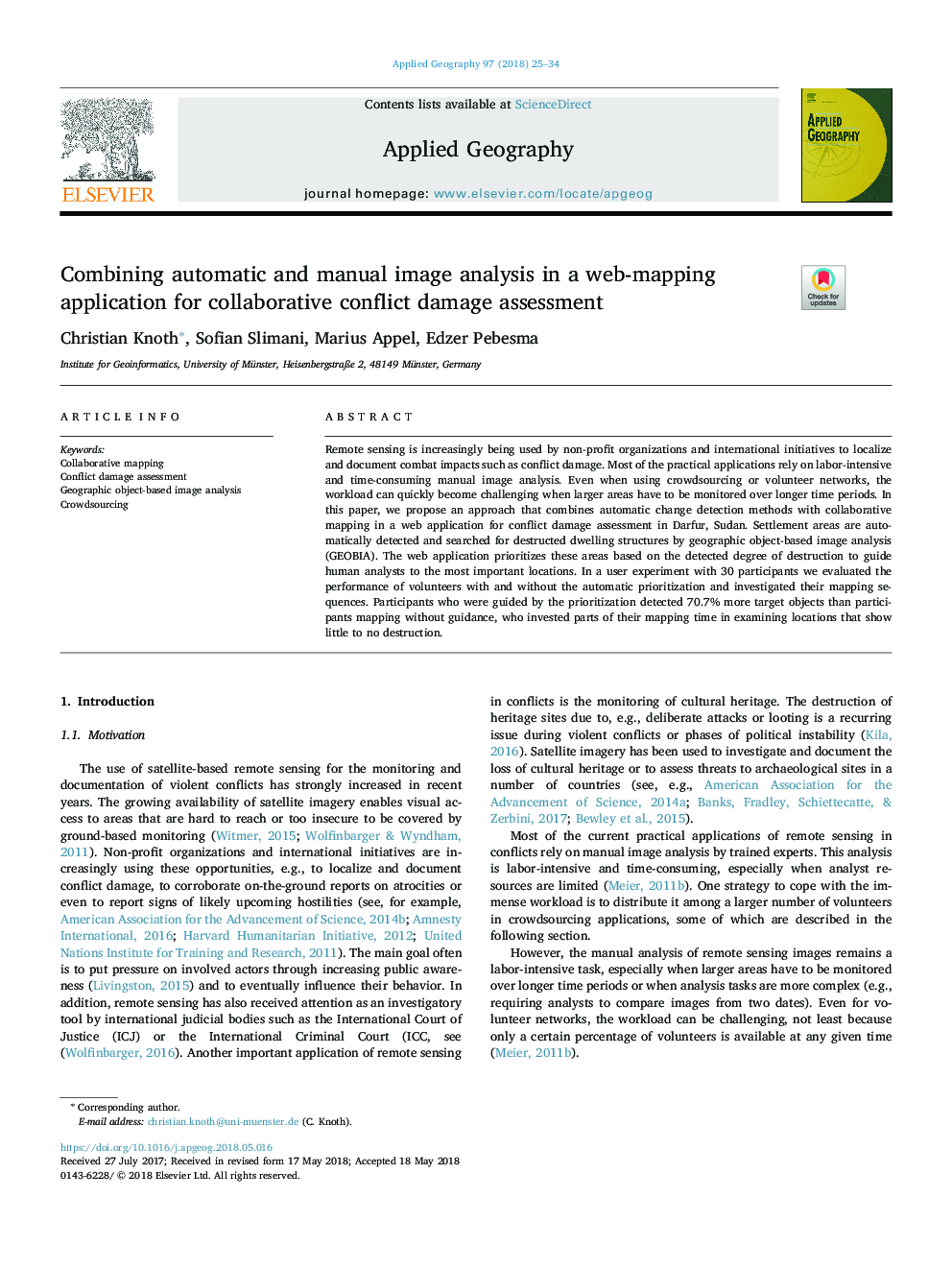| Article ID | Journal | Published Year | Pages | File Type |
|---|---|---|---|---|
| 6538223 | Applied Geography | 2018 | 10 Pages |
Abstract
Remote sensing is increasingly being used by non-profit organizations and international initiatives to localize and document combat impacts such as conflict damage. Most of the practical applications rely on labor-intensive and time-consuming manual image analysis. Even when using crowdsourcing or volunteer networks, the workload can quickly become challenging when larger areas have to be monitored over longer time periods. In this paper, we propose an approach that combines automatic change detection methods with collaborative mapping in a web application for conflict damage assessment in Darfur, Sudan. Settlement areas are automatically detected and searched for destructed dwelling structures by geographic object-based image analysis (GEOBIA). The web application prioritizes these areas based on the detected degree of destruction to guide human analysts to the most important locations. In a user experiment with 30 participants we evaluated the performance of volunteers with and without the automatic prioritization and investigated their mapping sequences. Participants who were guided by the prioritization detected 70.7% more target objects than participants mapping without guidance, who invested parts of their mapping time in examining locations that show little to no destruction.
Related Topics
Life Sciences
Agricultural and Biological Sciences
Forestry
Authors
Christian Knoth, Sofian Slimani, Marius Appel, Edzer Pebesma,
